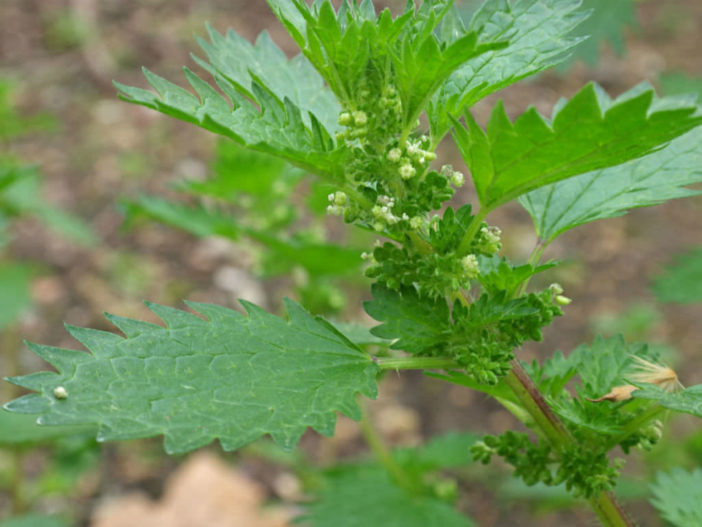Scientific Name
Urtica urens L.
Common Name(s)
Annual Nettle, Dwarf Nettle, Small Nettle, Dog Nettle, Burning Nettle, English Stinging Nettle
Synonym(s)
Urtica trianae
Scientific Classification
Family: Urticaceae
Genus: Urtica
Flower
Color: Creamy white
Bloom Time: June to September
Description
Urtica urens is a herbaceous annual flowering plant with erect or ascending stems, often branched from the base and up to 2 feet (60 cm) tall. The bright green leaves are oval, sharp-tipped, deeply toothed, and up to 1.6 inches (4 cm) long. The lower leaves are shorter than their stalks. The tiny flowers are creamy-white. The male and female flowers are borne on the same plant in short spikes.

Hardiness
It is grown as an annual plant, so it has no USDA hardiness zone.
How to Grow and Care
Nettles prefer rich soil with good moisture content and especially favor the edges of streams or nutrient-dense pastures.
Nettle seeds are tiny, light-dependent germinators that can be started indoors or out. However, select your location carefully as Nettles are very hardy and can spread quickly with the right conditions. Nettle can be assisted with stratification, but it is not necessary.
To start, tamp the tiny seeds lightly into the soil or cover them with a thin layer of soil (0.25 inch/6 mm). If starting indoors, sow in flats in late winter and transplant in early spring—space plants approximately 8 inches (20 cm) apart.
If direct sowing, seed in spring and thin as desired and plant rows 1 inch (2.5 cm) apart. It is recommended to find a permanent spot with rich, moist conditions a little away from (or on the periphery of) your other herbs.
See more at: How to Grow and Care for Stinging Nettle.
Origin
This species is native to Eurasia, and it can be found in North America and New Zealand as an introduced species.
Links
- Back to genus Urtica
- Plantpedia: Browse flowering plants by Scientific Name, Common Name, Genus, Family, USDA Hardiness Zone, or Origin
Photo Gallery
Click on a photo to see a larger version.




